Gardeners everywhere are familiar with marigolds. They are not exactly new. However, even though there are so many new types available now, I usually see people planting either the obnoxious pompom-shaped "African" marigolds, or the more diminutive "French" types.
Using place names to describe marigolds is a surprising taxonomic construction since neither type is found in Europe or Africa. In fact the genus Tagetes is native to southern Mexico.
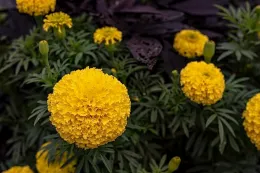 | 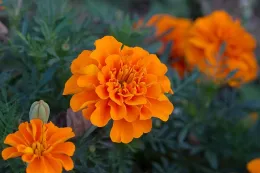 |
While marigolds are great sources of color in the garden, especially if you deadhead the fading blossoms, there are some more interesting options that can be planted. Breeders have been selecting new species and making interesting crosses. A favorite of mine that is not commonly seen in our area is the signet marigold, Tagetes tenuifolia. Perhaps the easiest to find of this type is the cultivar 'Tangerine Gem'.
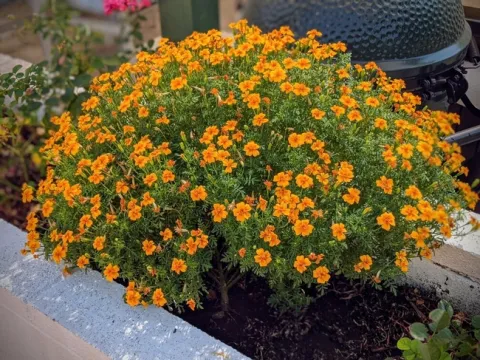
'Tangerine Gem' marigolds grow into a compact globe covered with orange (tangerine?) blossoms that need no deadheading. In my garden, I have had problems with earwigs and crickets eating the foliage of other marigolds, but at least earwigs seem to avoid this one. It has fine, dissected foliage that looks more like our native fernbush (Chamaebatiaria millefolium) than the usual marigolds. It tolerates full sun, but like most things in Owens Valley, prefers light shade in the afternoon. Mine started to bloom in mid-July and is exploding with color in these shorter days.
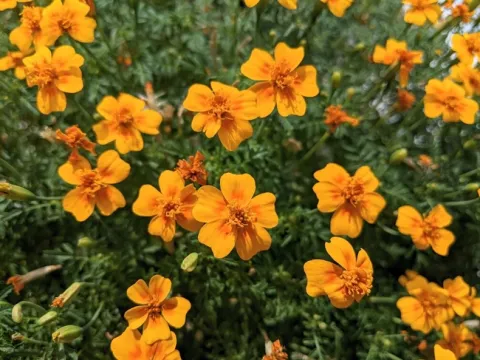
'Tangerine Gem' has edible blossoms, a nice bonus from the landscape! They are slightly bitter, but add interest and color to salads. Make sure you pluck off the petals. The base of the flower is very bitter and unappetizing.
One cool feature of many marigolds is that they are known to be antagonistic to root-knot nematodes. Unfortunately, this is one marigold that doesn't help. Many garden sources cite using 'Tangerine' marigolds, a cultivar of T. patula, to control nematodes. 'Tangerine Gem' is an entirely different plant. The University of Arkansas says that this cultivar may even make nematodes worse, so don't plant it where you've have nematode problems before. If nematode control is your goal, stick with other marigolds that have a good track record.
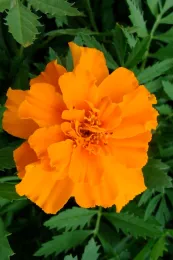
Chances are slim that you will find this marigold for sale locally as transplants, so the best way to get started with them is to buy seeds. (Thankfully inexpensive in this case.) All marigolds are easy to germinate. You can sow seeds directly in the garden 1/4" deep in April, just put out more than you need and thin out extras. It's usually best to start them inside. Make sure seeds are lightly covered. I've noticed this type starts a little slower than other marigolds, but it makes up for it later, with plenty of growth when the weather warms.
'Tangerine Gem' is a nice annual you should consider planting when you're planning out next year's garden.

